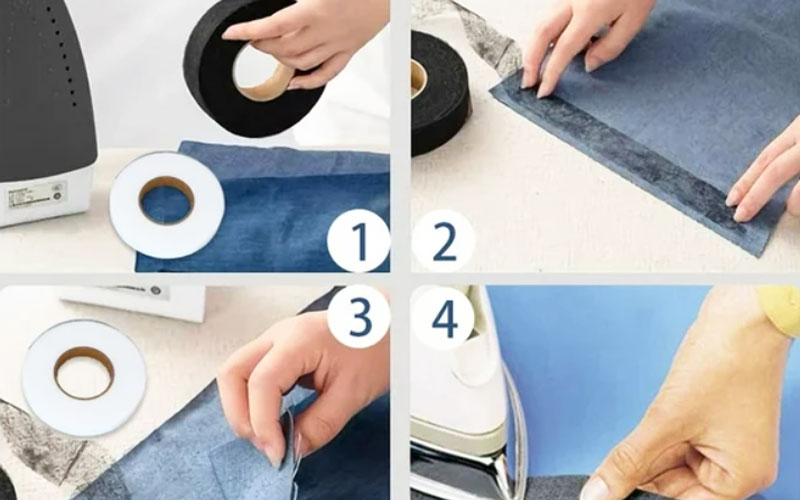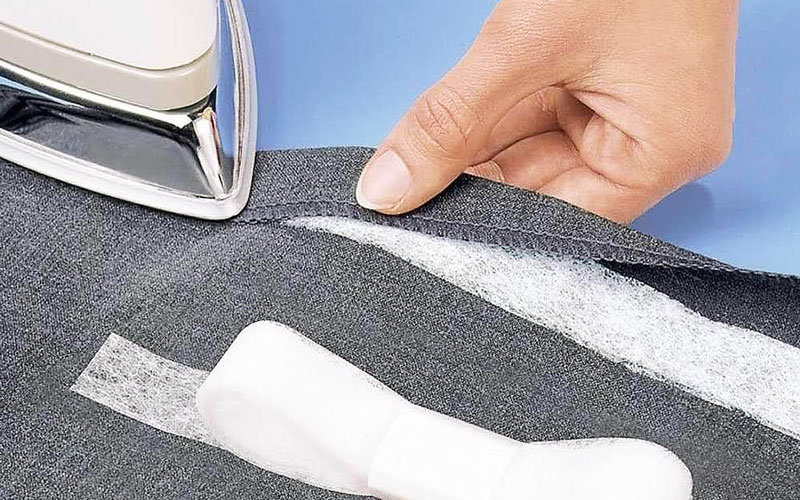When it comes to modern textile bonding solutions, one term consistently stands out: hot melt film adhesive. This material has quietly revolutionized industries ranging from apparel manufacturing to automotive interiors, offering a versatile, clean, and efficient alternative to traditional sewing or liquid adhesives. In this article, we’ll take a comprehensive look at what hot melt film adhesive is, how it works, why it’s considered indispensable for fabric applications, and why many manufacturers now regard it as the best hot melt film adhesive for fabric.
We’ll also compare it with alternatives, examine its advantages, and explore specific product types like tpu hot melt adhesive and tpu hot melt adhesive film. Whether you are a manufacturer, designer, or simply someone curious about modern fabric bonding technologies, this guide will walk you through everything you need to know.

1. What is Hot Melt Film Adhesive?
At its core, hot melt film adhesive is a thermoplastic adhesive presented in film form. Unlike liquid glues or spray adhesives, it exists as a thin, solid sheet or roll that melts when heated and re-solidifies upon cooling, forming a strong, durable bond between substrates.
Because it doesn’t require solvents or water, it is classified as a clean technology—no toxic fumes, no drying time, and minimal waste. This simple yet effective design makes it incredibly popular in industries where efficiency and environmental responsibility matter.
For fabric applications, the adhesive is sandwiched between two textile layers and activated with heat (often via heat press, hot rollers, or specialized laminating equipment). The melted adhesive penetrates the fibers just enough to lock them together, creating a seamless and flexible bond.
2. Why Fabric Needs a Specialized Adhesive
Textiles are inherently flexible, porous, and prone to wear and tear. Bonding fabric with traditional glue often results in stiffness, uneven adhesion, or weak durability after washing. Sewing is reliable but introduces stitch holes, visible seams, and limited design freedom.
This is why hot melt film adhesive is such a breakthrough. It provides:
Flexibility: The bond moves with the fabric, preventing cracking or stiffness.
Wash resistance: High-quality adhesives can withstand multiple laundry cycles.
Design freedom: Seamless bonding allows for creative patterns and applications without needlework.
Eco-friendliness: No solvents or VOC emissions, making it safer for both workers and the environment.
3. The Rise of Hot Melt Adhesives in the Textile Industry
Over the past two decades, the demand for hot melt film adhesive in fabric bonding has skyrocketed. This growth is fueled by consumer expectations for lighter, seamless, and more comfortable garments, as well as industrial requirements for efficiency.
Sportswear brands use it for bonding waterproof membranes to performance fabrics. Footwear manufacturers rely on it for attaching lining materials. Automotive companies apply it in seat covers and interior fabrics to ensure long-term durability.
The widespread adoption reflects not only its technical advantages but also its cost-effectiveness. In many cases, switching to adhesive bonding reduces labor, speeds up production, and improves consistency compared to manual sewing.
4. What Makes the Best Hot Melt Film Adhesive for Fabric?
Not all adhesives are created equal. Choosing the best hot melt film adhesive for fabric involves considering several key factors:
4.1 Bonding Strength
For fabrics that undergo stress—such as sportswear or upholstery—the adhesive must form a strong bond without compromising flexibility.
4.2 Wash Durability
Repeated washing cycles challenge the adhesive. High-performance films remain intact after dozens of washes, even in hot water.
4.3 Hand Feel
An ideal adhesive should remain soft to the touch. Overly rigid films can ruin the drape and comfort of the fabric.
4.4 Compatibility
Different fabrics require different adhesive chemistries. Natural fibers like cotton may bond differently compared to synthetics like polyester or nylon.
4.5 Processability
The adhesive should be easy to handle, cut, and apply in industrial settings. Smooth film form makes automation possible.

5. Comparing Hot Melt Film Adhesives with Alternatives
To understand the unique value of hot melt film adhesive, it’s worth comparing it with common alternatives:
Liquid adhesives: Messy, take time to dry, and often release fumes.
Sewing: Durable but time-intensive, creates visible seams, and limits design freedom.
Fusing powders: Less precise application and less consistent bonding.
Against these, hot melt films provide a clean, efficient, and controllable process, making them increasingly popular in high-end textile production.
6. TPU Hot Melt Adhesive and Its Advantages
One of the most widely used variations is tpu hot melt adhesive. TPU (thermoplastic polyurethane) is known for its elasticity, abrasion resistance, and durability, making it an ideal match for fabric bonding.
Some of its key advantages include:
Excellent flexibility: Ideal for stretch fabrics used in sportswear.
Transparency: Maintains aesthetic appearance without visible glue lines.
Durability: Resistant to washing, abrasion, and environmental factors.
Comfort: Provides a soft hand feel, ensuring that garments remain comfortable.
This makes TPU-based films a top choice when balancing strength, flexibility, and comfort.
7. TPU Hot Melt Adhesive Film: A Special Category
While TPU adhesive can come in granule or powder form, tpu hot melt adhesive film offers unique benefits. The film form ensures uniform thickness and precise application, making it highly suitable for automated production lines.
For example, when bonding performance fabrics in sportswear or technical outdoor gear, manufacturers often prefer TPU films because they can be cut, layered, and laminated with great accuracy. The uniformity of film application ensures consistency in mass production—something powders and liquids can’t always guarantee.
8. Applications Across Industries
Hot melt film adhesive has countless applications across industries, but fabrics remain one of the largest markets. Let’s explore some major uses:
8.1 Apparel Industry
From sportswear to lingerie, adhesive bonding has transformed garment construction. It allows seamless hems, invisible seams, and waterproof bonding.
8.2 Footwear
Shoe linings, insoles, and overlays often rely on adhesives for durability without adding bulk.
8.3 Automotive Interiors
Car seats, headliners, and trim components frequently use hot melt film adhesive for long-lasting, durable bonding.
8.4 Home Textiles
Curtains, upholstery, and bedding can be laminated or strengthened with adhesive films.
8.5 Medical Textiles
Disposable garments, protective suits, and even wound dressings sometimes incorporate adhesive films for hygiene and durability.
9. Processing and Application Techniques
Applying hot melt film adhesive requires precise control of heat, pressure, and dwell time. Too much heat may damage fabrics; too little may weaken the bond. Common methods include:
Heat press machines for small-scale bonding.
Flatbed laminators for continuous rolls of fabric.
Roll-to-roll systems for mass production.
The ability to control the process makes it adaptable across industries, from boutique design studios to large-scale factories.
10. Sustainability and Eco-Friendliness
Sustainability is no longer optional in manufacturing. Fortunately, hot melt film adhesive aligns well with eco-friendly practices:
No solvents: Eliminates harmful VOC emissions.
Minimal waste: Films are applied in exact quantities, avoiding excess.
Energy efficiency: Bonds quickly without extended drying or curing times.
Recyclability: Many TPU-based adhesives can be recycled along with textiles.
As global regulations tighten, companies using solvent-based adhesives are shifting toward film adhesives to remain compliant and reduce environmental impact.
11. Challenges and Limitations
Despite its advantages, hot melt film adhesive does face challenges:
Heat sensitivity: Some delicate fabrics can’t tolerate the required bonding temperatures.
Cost: High-quality films may be more expensive upfront compared to traditional methods.
Equipment requirement: Factories need specific laminating equipment, which may increase initial investment.
Still, for most applications, the benefits outweigh the limitations—especially in industries that value precision, efficiency, and sustainability.
12. Future of Hot Melt Film Adhesives in Fabric Bonding pressure
Looking ahead, innovation in adhesive chemistry promises even better performance. Research is underway into lower-temperature bonding films, biodegradable formulations, and films with additional functionalities (like antimicrobial properties).
With consumers demanding more sustainable, high-performance products, the future is bright for hot melt film adhesive. Its role in textiles will only expand as industries seek alternatives to sewing and solvent-based adhesives.
13. Conclusion
In fabric bonding, efficiency, durability, and comfort are non-negotiable. Hot melt film adhesive has emerged as a leading solution, providing seamless bonding, flexibility, wash resistance, and eco-friendliness. From fashion to automotive interiors, it plays a critical role in shaping how modern textiles are made.
When choosing the best hot melt film adhesive for fabric, consider factors like strength, washability, and compatibility with your materials. Options like tpu hot melt adhesive and tpu hot melt adhesive film stand out for their superior elasticity and comfort, making them ideal choices for performance textiles.
As industries continue to innovate, one thing remains clear: hot melt film adhesives are not just a passing trend—they are the future of fabric bonding.
